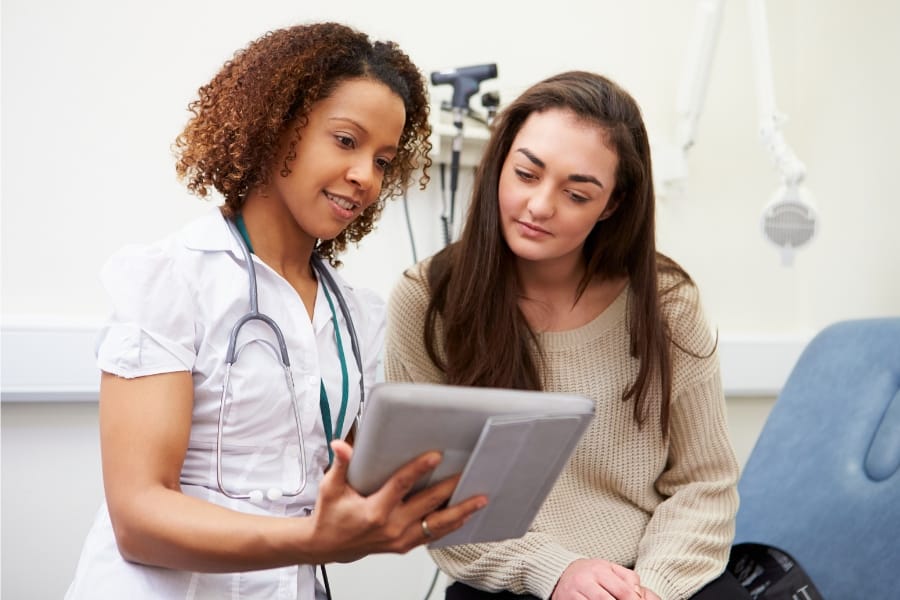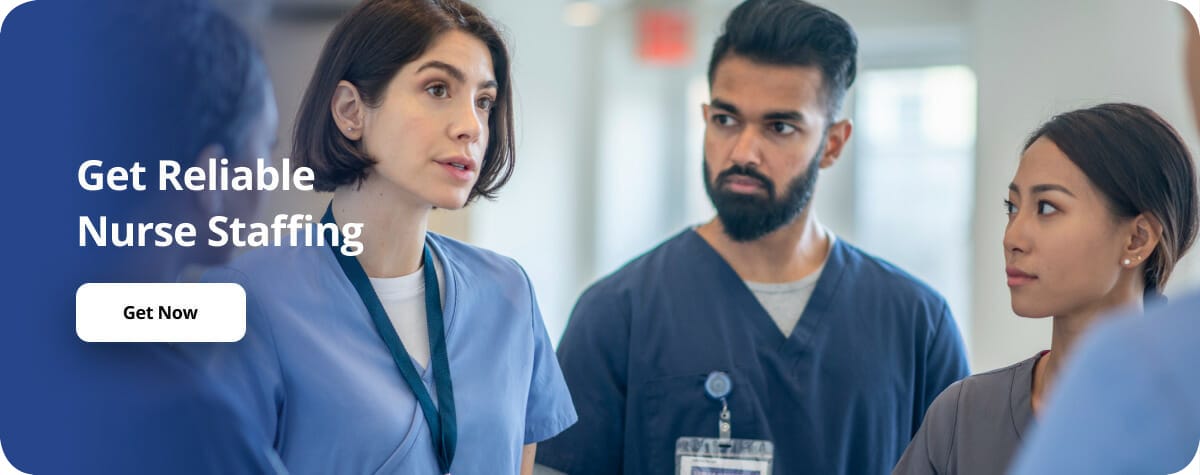Nurse safety has become an increasingly critical concern in healthcare settings across the globe.
Healthcare professionals, especially nurses, often work in high-pressure environments with long hours, which can expose them to various risks, including workplace violence and physical threats.
Ensuring the safety of nursing staff is essential not only for their well-being but also for maintaining a positive and efficient healthcare environment.
One of the most effective ways to address these concerns is by integrating surveillance systems and access control solutions into healthcare security systems.
By combining video surveillance with access control measures, healthcare facilities can create a safer environment for nurses and other healthcare workers, reducing the risks they face daily. I
n this article, we will explore how hospital security systems and healthcare security solutions can be integrated to enhance nurse safety, how they work together, and the benefits of adopting this integrated approach.
The Growing Need for Nurse Safety in Healthcare Facilities
IN THIS ARTICLE
Nurses work in environments where they frequently interact with patients, visitors, and colleagues, and often handle emotionally and physically challenging situations.
Unfortunately, incidents of violence in healthcare settings, including verbal abuse, physical assaults, and even active shooter threats, are on the rise. According to the Occupational Safety and Health Administration (OSHA), healthcare workers are four times more likely to experience workplace violence than employees in other industries.
While healthcare facilities strive to provide high-quality care, it is just as important to ensure the safety of healthcare workers.
In this context, healthcare security systems play a crucial role in protecting staff and creating a safer, more secure work environment.
How Integrating Surveillance and Access Control Enhances Nurse Safety
1. Real-Time Monitoring for Immediate Threat Detection
Surveillance systems that are integrated with real-time video feeds provide healthcare facilities with the ability to monitor staff, patients, and visitors at all times.
High-definition cameras strategically placed throughout the facility, including patient rooms, hallways, and entry points, enable security personnel to monitor activity and detect potential threats as they happen.
When surveillance systems are linked to access control systems, healthcare facilities gain a more comprehensive view of who is entering and exiting restricted areas, allowing security teams to quickly spot any unusual behavior or unauthorized individuals in sensitive locations, such as nurses’ stations or emergency departments.
If a situation arises that puts nurses at risk, security personnel can intervene promptly, ensuring that threats are addressed before they escalate.
2. Controlled Access to Sensitive Areas
A critical component of hospital security systems is access control, which limits access to certain areas within a healthcare facility.
Nurses, nursing assistants, and other staff members must have access to various areas to provide care, but unauthorized individuals should be restricted from entering sensitive or high-risk zones.
By integrating access control solutions with surveillance systems, healthcare and long-term care facilities can not only control who enters specific areas but also have a record of when and where they entered.
For example, if a nurse is working in a high-risk area, such as a psychiatric ward or a high-security department, access control systems ensure that only authorized personnel can enter.
In the case of a potential threat, security can use surveillance footage in conjunction with access logs to assess the situation and respond accordingly.
3. Two-Way Communication for Quick Response
Modern healthcare security solutions integrate surveillance systems with two-way communication tools, such as panic buttons or intercoms, allowing nurses to communicate directly with security personnel in case of an emergency.
If a nurse feels threatened or is in danger, they can instantly alert security by pressing a button or using a voice communication system linked to the surveillance network.
This rapid communication allows for faster response times and ensures that help is on the way immediately. This puts an emphasis on care coordination for health care teams.
Additionally, with remote video monitoring, security personnel can assess the situation in real-time and guide first responders or healthcare staff to the scene with all relevant information.
4. Tracking and Accountability
When providing medical care in a healthcare facility, ensuring that staff members are safe at all times is essential.
Access control systems can track when a nurse enters or exits a particular area, providing a clear record of their movements within the facility. If an incident occurs, the system can pinpoint the nurse’s location, ensuring they receive the help they need promptly.
Moreover, by integrating video surveillance with access control systems, healthcare facilities can ensure that only authorized personnel are accessing restricted areas.
This adds an additional layer of security, preventing intruders from entering sensitive locations where they may pose a risk to staff or patients.
It should be a priority to promote a culture of safety at all times.
5. Preventing Workplace Violence and Improving Behavior
A well-designed surveillance and access control system can act as a deterrent to workplace violence.
When staff members and visitors are aware that they are being monitored, the likelihood of aggressive, bad nursing habits, or inappropriate behavior decreases. The presence of security cameras in high-risk areas, such as emergency rooms or psychiatric wards, creates a safer environment for nurses and healthcare workers.
In addition to preventing violence, hospital security systems can be used to monitor compliance with hospital policies, including employee conduct and interactions with patients.
If an incident occurs, recorded footage can be used as evidence to identify inappropriate behavior or resolve disputes.
Key Features to Look for in Healthcare Security Systems

When choosing healthcare security solutions, it’s important to consider several features that enhance the effectiveness of the system in protecting nurses and staff members. Some of the key features to look for include:
- Integration Capabilities: Look for systems that seamlessly integrate both video surveillance and access control, providing a unified approach to security.
- Real-Time Alerts: Choose systems that can trigger real-time alerts when suspicious activity is detected, ensuring immediate action can be taken.
- Remote Video Monitoring: Ensure that security personnel can monitor the facility remotely, offering more flexibility and faster response times.
- AI-Powered Analytics: Consider AI camera systems that can detect unusual behavior, such as aggression or unauthorized access, and automatically send alerts to security teams.
- Data Encryption and Privacy: Since healthcare environments handle sensitive information, it’s crucial to ensure that video footage and access data are securely encrypted to protect patient and staff privacy.
The Impact of Integration on Nurse Safety and Well-being
The integration of surveillance systems and access control plays a significant role in fostering a safer and more supportive working environment for nurses.
Knowing that their safety is a priority enhances the well-being of healthcare staff, helping to reduce stress, anxiety, and the fear of violence.
This, in turn, can improve job satisfaction, retention rates, and overall quality of care in healthcare settings.
Furthermore, this will significantly increase patient outcomes, ensuring that the overall healthcare environment remains positive and efficient.
Start Promoting Nurse Safety
Integrating surveillance and access control in healthcare facilities is essential for enhancing nurse safety and ensuring a secure working environment.
With the right healthcare security systems, hospitals and clinics can proactively protect their staff from workplace violence, improve response times, and create a more secure and supportive environment for both nurses and patients.
By implementing integrated surveillance and access control solutions, healthcare facilities can build a robust security framework that not only addresses immediate threats but also provides long-term peace of mind for healthcare professionals.
This integrated approach is a critical step towards safeguarding those who work tirelessly to care for others while maintaining a safe, secure, and well-functioning healthcare environment.
Get Nursing Support
If your healthcare facility could benefit from reliable and professional nurses, NurseRegistry can help!
Whether you’d like a continual roster of reliable RNs or LVNs or quickly need a shift filled, NurseRegistry quickly places nurses to make staffing as convenient as ever.
Click below to learn more today.






